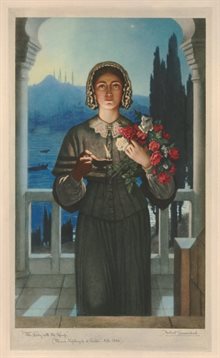Finding Her Life's Work
In May 1850 Florence had written in her diary: 'I am now 30, the age at which Christ began His mission. Now no more childish things, no more vain things, no more love, no more marriage. Now Lord let me think only of Thy will.'
She spent time at the Kaiserswerth Institute in Germany, where there was a hospital, school, orphanage and penitentiary. Florence was there to learn: 'I took all the training that was to be had, since there was none to be had in England' and she left Kaiserswerth 'feeling so brave as if nothing could ever vex me again!'
In 1851, Florence’s parents finally gave in to her daughter’s wishes. Her father gave her an income of £500 a year, worth about £30,000 today, which enabled her to live comfortably and to follow her calling.
Her mother wrote: 'Yes, my dear, yes. Take time, take faith and take love with you, even though it be to walk in a path which leads you strangely from us all. I will do my best, I will indeed, to think you right, and let you follow the manner of man you are.'
In August 1853 Florence began work at the Institute for the Care of Sick Gentlewomen in Upper Harley Street, London. She wrote to a friend: 'I am living in an ideal world of lifts, gas, baths and double and single wards!'
Six months later Britain declared war on Russia. In September 1854, British troops landed in the Crimea.

‘The Lady with the Lamp’, 1933. Oil painting by Herbert Carmichael (formerly Herbert Gustave Schmalz). British Museum, used under Creative Commons licence CC BY-NC-SA 4.0.